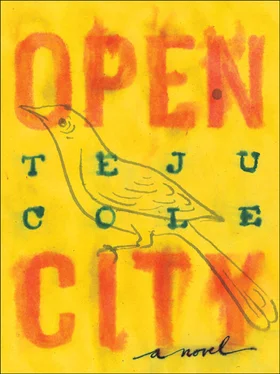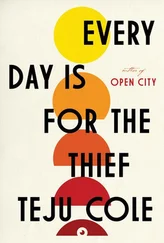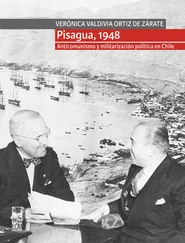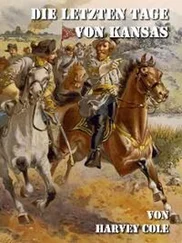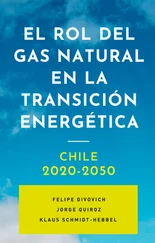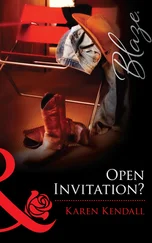Teju Cole - Open City
Здесь есть возможность читать онлайн «Teju Cole - Open City» весь текст электронной книги совершенно бесплатно (целиком полную версию без сокращений). В некоторых случаях можно слушать аудио, скачать через торрент в формате fb2 и присутствует краткое содержание. Год выпуска: 2011, Издательство: Random House, Жанр: Современная проза, на английском языке. Описание произведения, (предисловие) а так же отзывы посетителей доступны на портале библиотеки ЛибКат.
- Название:Open City
- Автор:
- Издательство:Random House
- Жанр:
- Год:2011
- ISBN:нет данных
- Рейтинг книги:5 / 5. Голосов: 1
-
Избранное:Добавить в избранное
- Отзывы:
-
Ваша оценка:
- 100
- 1
- 2
- 3
- 4
- 5
Open City: краткое содержание, описание и аннотация
Предлагаем к чтению аннотацию, описание, краткое содержание или предисловие (зависит от того, что написал сам автор книги «Open City»). Если вы не нашли необходимую информацию о книге — напишите в комментариях, мы постараемся отыскать её.
But it is not only a physical landscape he covers; Julius crisscrosses social territory as well, encountering people from different cultures and classes who will provide insight on his journey — which takes him to Brussels, to the Nigeria of his youth, and into the most unrecognizable facets of his own soul.
Open City — читать онлайн бесплатно полную книгу (весь текст) целиком
Ниже представлен текст книги, разбитый по страницам. Система сохранения места последней прочитанной страницы, позволяет с удобством читать онлайн бесплатно книгу «Open City», без необходимости каждый раз заново искать на чём Вы остановились. Поставьте закладку, и сможете в любой момент перейти на страницу, на которой закончили чтение.
Интервал:
Закладка:
Night had fallen. I entered the apartment and threw off my clothes and lay in bed in the darkened room, naked. Heavy drops tapped on the window. The weather report was right: in ever widening circles from where I stood, rain was lashing the land. It fell heavily all over the Portuguese district, on the shrine to Pessoa and on Casa Botelho. It fell on Khalil’s phone shop, where Farouq had perhaps just begun his shift. It fell on the bronze head of Leopold II at his monument, on Claudel at his, on the flagstones of the Palais Royal. The rain kept coming down, on the battlefield of Waterloo at the outskirts of the city, the Lion’s Mound, the Ardennes, the implacable valleys full of young men’s bones grown old, on the preserved cities farther out west, on Ypres and the huddled white crosses dotting Flanders fields, the turbulent channel, the impossibly cold sea to the north, on Denmark, France, and Germany.
PART 2. I have searched myself
TWELVE
I made an effort to develop a mind of winter. Late last year, I actually said to myself audibly, as I do when I swear these oaths, that I would have to embrace winter as part of the natural cycle of seasons. Ever since I left Nigeria, I’d had a bad attitude about cold weather, and I wanted to put an end to that. The effort was surprisingly successful, and through October, November, and December, I was properly braced for winds and snow. One thing that helped was that I made a habit of overdressing. Without checking the daily weather, I would wear long johns, doubled socks, a scarf, woolen gloves, a long, thick, dark blue coat, and heavy shoes. But it was to be a year without a real winter. The blizzards for which I braced never came. There were a few days of cold rain, and one or two cold snaps, but heavy snow stayed away. We had a series of sunny days in the middle of December, and I was unnerved by that mildness, and when the season’s first snow did eventually fall, it was while I was in Brussels, getting drenched by the rain there. The snow was in any case short-lived, melted away by the time I returned to New York in mid-January, and thus did the impression of unseasonal, somewhat uncanny, warmth persist in my mind, keeping the world, as I experienced it, on edge.
Those thoughts had returned even before I was properly back in the city. The pilot’s voice crackling through the system— We are now making our final approach for landing —added to the anxiety of return because those ordinary and, by now, banal words seemed to carry some ghostly portent. My thoughts quickly became entangled with one another, so that, in addition to the usual morbid thoughts one normally has on a plane, I was saddled with strange mental transpositions: that the plane was a coffin, that the city below was a vast graveyard with white marble and stone blocks of various heights and sizes. But as we broke through the last layer of clouds and the city in its true form suddenly appeared a thousand feet below us, the impression I had was not at all morbid. What I experienced was the unsettling feeling that I had had precisely this view of the city before, accompanied by the equally strong feeling that it had not been from the point of view of a plane.
Then it came to me: I was remembering something I had seen about a year earlier: the sprawling scale model of the city that was kept at the Queens Museum of Art. The model had been built for the World’s Fair in 1964, at great cost, and afterward had been periodically updated to keep up with the changing topography and built environment of the city. It showed, in impressive detail, with almost a million tiny buildings, and with bridges, parks, rivers, and architectural landmarks, the true form of the city. The attention to detail was so meticulous that one could not help but think of Borges’s cartographers, who, obsessed with accuracy, had made a map so large and so finely detailed that it matched the empire’s scale on a ratio of one to one, a map in which each thing coincided with its spot on the map. The map proved so unwieldy that it was eventually folded up and left to rot in the desert. Our view from the plane, as we banked over Queens itself, brought all of that back to mind, and in this case it was the real city that seemed to be matching, point for point, my memory of the model, which I had stared at for a long time from a ramp in the museum. Even the raking evening light falling across the city evoked the spotlighting used at the museum.
On the day I had seen the Panorama, I had been impressed by the many fine details it presented: the rivulets of roads snaking across a velvety Central Park, the boomerang of the Bronx curving up to the north, the elegant beige spire of the Empire State Building, the white tablets of the Brooklyn piers, and the pair of gray blocks on the southern tip of Manhattan, each about a foot high, representing the persistence, in the model, of the World Trade Center towers, which, in reality, had already been destroyed.
THE DAY AFTER I RETURNED, STILL IN THE MENTAL FOG OF JET lag, and knowing that by seven in the evening I would start to get sleepy, I tried to keep thoughts of Monday from my mind. That my colleagues would be hostile toward me was an inevitability because I had taken all four of my vacation weeks at once. Using up vacation time like this was permitted, under the regulations of the program, but it was unusual, and considered bad form because it put the other residents under additional pressure. It was the kind of thing that would probably show up in a future letter of recommendation, disguised in the language of faint praise. In the course of the four weeks of my absence, many of the cases would have turned over, with the exception of the most serious admissions. There were bound to be several new patients.
The weeks to come were going to be difficult.
That was still a day away. On Sunday, I went down to the International Center of Photography in midtown. The main attraction there was a show on Martin Munkácsi. Admission was reduced for students, so I lied, flashing my expired medical school ID, and as I did so remembered how seriously Nadège had taken this practice. I had always countered her by saying that I was hardly earning more than a student, even if I was technically out of school. I had begun to use the expired ID more often, at first as a way to annoy her, and then, afterward, out of habit. Nadège came to mind because she had written to me while I was away. In the pile of printed mail waiting for me at the apartment when I arrived, there was the lime green envelope, addressed in her hand. The card was a sickly-sweet Nativity scene, and on the inside she had written a plain Christmas greeting.
The show was crowded and the prints unexpectedly lively. Munkácsi’s journalism was dynamic; he liked sports poses, youth, people in motion. In these snaps — which were so carefully composed but always seemed to have been taken on the go — I could see the alertness that he brought to his other masterful work, such as the photograph of three African boys running into the surf in Liberia. It was from him, and from this picture in particular, that Henri Cartier-Bresson had developed the ideal of the decisive moment. Photography seemed to me, as I stood there in the white gallery with its rows of pictures and its press of murmuring spectators, an uncanny art like no other. One moment, in all of history, was captured, but the moments before and after it disappeared into the onrush of time; only that selected moment itself was privileged, saved, for no other reason than its having been picked out by the camera’s eye.
Munkácsi moved from Hungary to Germany, where he would remain until 1934. He worked for the Berliner Illustrirte Zeitung , a weekly paper of photographs and advertising; it was for this paper that he had made his picture of the Liberian boys in 1930. The Illustrirte Zeitung had covered the First World War, and would, after Munkácsi’s departure, cover the Second as well. In the ICP show, copies of the magazine, showing Munkácsi’s work, had been placed in Plexiglas cases at waist height. A man in his sixties was studying the same case as I was, and we stood side by side, leaning over the clear case. His face was relaxed, and he wore a yellow windbreaker. Seeing how intently I was studying the magazine, he said, without turning to look at me, that the spelling was a mistake — what was printed on the newspaper was illustrirte instead of illustrierte , he said — and that had been the case since the first issue. In that first issue, the gentleman said, it had been an error, but later, it became a kind of trademark for the magazine and was left unchanged. This was familiar to him, he said, because he remembered the magazine from his childhood. It had come to their house weekly when he was a little boy in Berlin.
Читать дальшеИнтервал:
Закладка:
Похожие книги на «Open City»
Представляем Вашему вниманию похожие книги на «Open City» списком для выбора. Мы отобрали схожую по названию и смыслу литературу в надежде предоставить читателям больше вариантов отыскать новые, интересные, ещё непрочитанные произведения.
Обсуждение, отзывы о книге «Open City» и просто собственные мнения читателей. Оставьте ваши комментарии, напишите, что Вы думаете о произведении, его смысле или главных героях. Укажите что конкретно понравилось, а что нет, и почему Вы так считаете.
